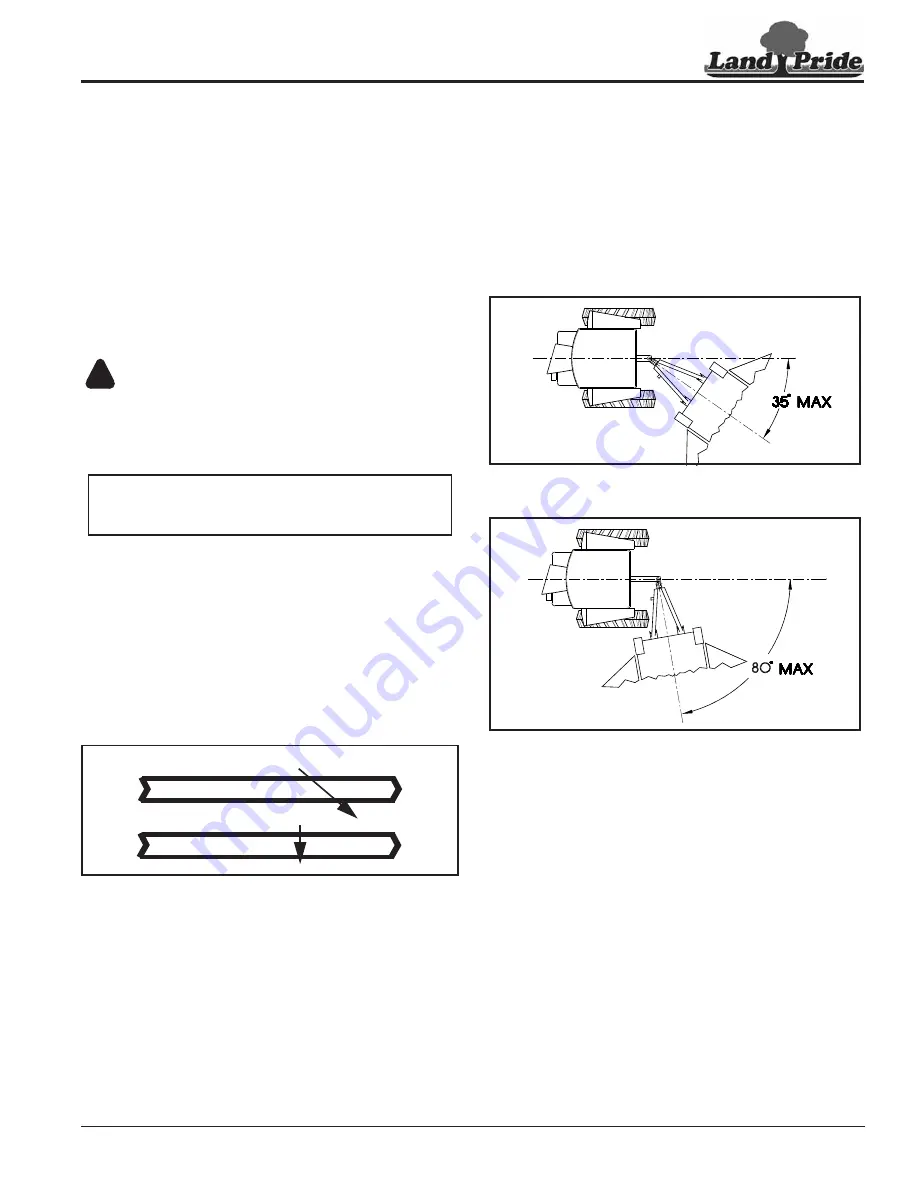
Section 4: Operating Instructions
RCF3096, RCF3010, & RCFM3010 Rotary Cutters 326-566M
11/8/18
49
5. Do not engage power take-off with 3-point cutter fully
raised.
6. Periodically disengage power take-off, shut down
tractor, remove key, and check for foreign objects
wrapped around the blade spindle. Block cutter deck
up before removing objects.
7.
Frequently inspect cutter for loose bolts and nuts.
Tighten all loose bolts and nuts as indicated in the
“Torque Values Chart”
8. For additional information, see
Crossing Steep Ditches & Banks
WARNING
!
To avoid serious injury or death:
Cutting over ditches and backing up hills can tilt the
cutter’s back side up excessively resulting in “
Bottoming
Out
” the driveline. Bottoming out is when the driveline
shaft has shortened to the point it is pressing against the
gearbox and tractor power take-off shafts. Once a
driveline has bottomed out, it can not be shortened
anymore without causing serious damage to the tractor
power take-off components, cutter gearbox and driveline.
Do not operate a pull-type cutter at an angle exceeding
25 degrees up or down or at any angle that will force the
driveline to bind and/or hit the tractor drawbar.
Crossing Steep Ditches and Banks
Figure 4-1
IMPORTANT:
Always cross ditches and banks at a
diagonal. Never cross straight across and never
back into a ditch or bank.
Ditch / Bank
Wrong
Right
Ditch / Bank
Turning Angles for Pull-Type Cutters
Refer to Figure 4-2 & Figure 4-3:
Avoid tractor-to-cutter turning angles exceeding 35
degrees if main driveline is a standard conventional drive
shaft. The turning angle may be increased to 80 degrees
if equipped with a constant velocity driveline shaft. These
extreme angles are intended for intermittent usage only
and not prolonged usage. Plan your field cutting to
minimize the number of turns as well as extreme angles
where turns are necessary.
Conventional U-Joint Driveline
Figure 4-2
CV Driveline
Figure 4-3
11934
20795






























